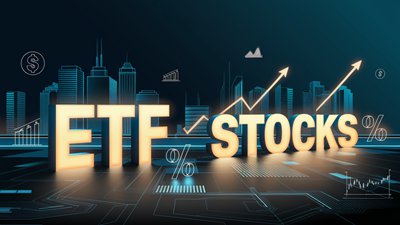MarketLens
XLE: Are Energy Dividend Stocks Charging Up for Investors?
The Energy Select Sector SPDR Fund ETF (XLE) presents a compelling investment opportunity for those seeking exposure to energy dividend stocks. The fund has demonstrated remarkable recovery and growth, driven by geopolitical tensions, robust demand, and strong financial performance from its constituent companies. This report analyzes the current state of XLE, evaluates underlying trends, and discusses potential implications for investors and stakeholders.
Overview of XLE Performance
The Energy Select Sector SPDR Fund ETF (XLE) has rebounded significantly since the COVID-19 market crash, with returns nearing 300%. This recovery is attributed to several factors, including the ongoing Russia-Ukraine conflict, heightened tensions in the Middle East, and a resilient U.S. economy grappling with high inflation. As of July 2024, XLE closed at $91.79, reflecting a year-to-date total return of 13.17% and a one-year return of 17.51%. The fund’s net assets stand at approximately $37.87 billion, with a low expense ratio of 0.09%, making it an attractive option for investors seeking diversified exposure to the energy sector.
Key Holdings and Dividend Yield
XLE’s top holdings include major players such as Exxon Mobil (23.14%), Chevron (17.73%), and EOG Resources (4.78%). The fund currently offers a dividend yield of 3.21%, with an annual dividend payment of $2.92 per share. Despite a recent decrease in dividend payments, the fund’s historical growth rates indicate a trend toward higher and more resilient dividends, with a 10-year CAGR of 5.66% and a three-year CAGR of 11.43%. This positions XLE favorably for income-seeking investors.
Factors Driving Demand for Energy Stocks
Geopolitical Tensions
The ongoing geopolitical tensions, particularly the Russia-Ukraine conflict, have created a volatile energy market. These tensions have led to supply constraints and increased prices for oil and natural gas, benefiting companies within the XLE. As global energy demand continues to rise, particularly with the growth of artificial intelligence and other technology sectors, energy companies are well-positioned to capitalize on this trend.
Economic Resilience and Inflation
The U.S. economy has shown resilience despite high inflation, which has historically benefited energy stocks. The current economic landscape suggests that energy demand will remain robust, even as concerns about the energy transition and electric vehicle adoption loom. Elevated costs for renewable energy generation have slowed growth projections in that sector, further solidifying the position of traditional energy companies.
Financial Health of Energy Companies
Energy companies within the XLE have significantly improved their balance sheets and are generating substantial free cash flow. This financial strength allows them to return capital to shareholders through dividends and buybacks. The current payout ratio of 27.08% indicates that companies are maintaining a conservative approach to dividend payments while still rewarding shareholders.
Analysis of Dividend Growth Trends
Historical Performance
While the recent dividend payments have seen a decrease of 8.81% over the past year, the long-term growth trajectory remains positive. The acceleration in dividend growth, particularly in the last three years, suggests that energy companies are adapting to market conditions and prioritizing shareholder returns. The combination of strong cash flow generation and a commitment to returning capital positions XLE as a reliable source of income for investors.
Future Outlook
Looking ahead, the medium- to long-term outlook for XLE and energy dividend stocks appears promising. The anticipated growth in energy demand, coupled with the financial health of the underlying companies, supports the potential for continued dividend growth. Investors can expect XLE to yield a combined 3.2% trailing 12-month dividend yield, which is likely to outpace inflation in the coming years.
Implications for Investors and Stakeholders
Investment Opportunities
For income-focused investors, XLE presents a viable option for generating consistent returns through dividends. The fund’s low expense ratio and diversified exposure to leading energy stocks enhance its attractiveness. Additionally, the strong performance of individual stocks within the fund, such as Targa Resources (48.3% performance in 2024) and Diamondback Energy (29.1%), indicates that there are significant opportunities for capital appreciation.
Risk Considerations
Despite the positive outlook, investors should remain cautious of potential risks. Volatility in oil prices, regulatory changes, and shifts in energy policy could impact the performance of energy stocks. The recent Supreme Court decision to overturn the Chevron Doctrine may introduce uncertainties in energy regulations, which could affect the operational landscape for companies within XLE.
Strategic Positioning
Investors should consider a strategic approach to investing in XLE. Given the current geopolitical climate and economic conditions, a diversified portfolio that includes energy stocks can provide a hedge against inflation and market volatility. Furthermore, as the energy transition progresses, companies that adapt to new technologies and sustainable practices may emerge as leaders in the sector.
Conclusion
In conclusion, the Energy Select Sector SPDR Fund ETF (XLE) offers a compelling investment opportunity for those seeking exposure to energy dividend stocks. The fund’s remarkable recovery, strong financial performance of its constituent companies, and favorable dividend growth trends position it well for future success. While risks remain, the overall outlook for XLE is bullish, driven by robust demand for energy and the financial health of the underlying companies. Investors should consider XLE as part of a diversified investment strategy, capitalizing on the potential for income generation and capital appreciation in the energy sector. As the market evolves, XLE is likely to remain a key player in the energy landscape, providing valuable insights and opportunities for stakeholders.
Related Articles
Category
You may also like
No related articles available
Breaking News
View All →No topics available at the moment






